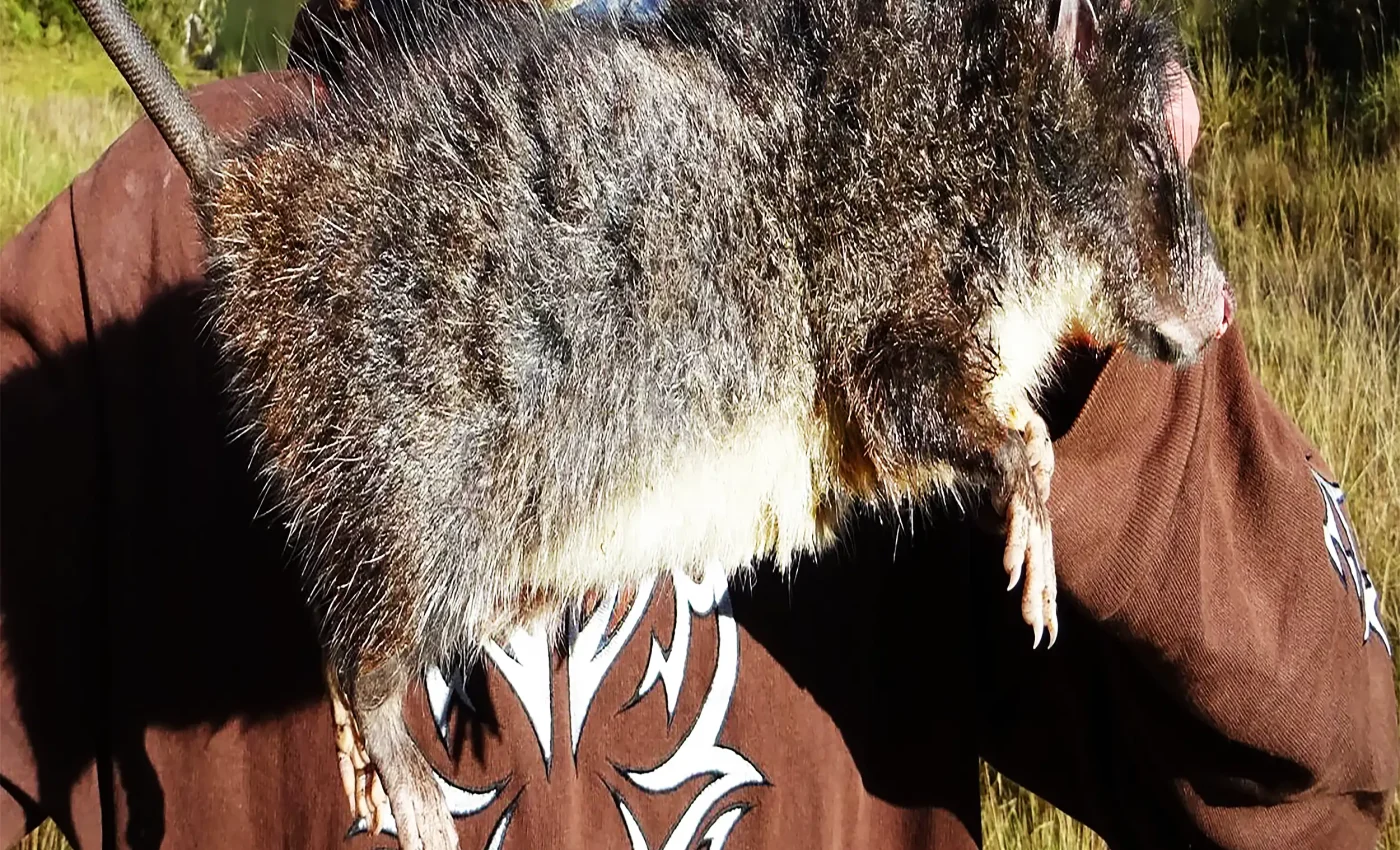
A "Giant Woolly Rat" was just photographed for the first time ever, proving it's not a myth
New Guinea often feels like a continent squeezed into an island. Mountains rise straight out of steamy coastal forests, and clouds snag on ridges that tower more than 2 miles above the sea. In those chill upper reaches, plants and animals have carved out lives that exist nowhere else.
The world’s largest tropical island straddles the line between Asia and Australia, so its wildlife draws from both sides. Kangaroo cousins hop in the understory while echidnas probe the soil for insects. Asian lineages slid in later, including two waves of rats.
The older arrivals, members of the Hydromyini clan, landed roughly 8.5 million years ago and fanned out across New Guinea and into Australia. They now range from stream-loving swimmers to desert burrowers.
Mallomys istapantap – A gentle giant
For decades, biologists suspected that one of the island’s high-elevation residents – a hulking, wool-coated rat – roamed under the radar. Locals spoke of it, museum drawers held a few weather-worn skulls, yet no one had managed to see it alive.
Among those pioneers sits the woolly rat genus Mallomys. These rodents traded sleek coats for shaggy insulation, a handy adaptation when nights dip below freezing near the island’s summits.
One member of the group, the subalpine “giant woolly rat” (Mallomys istapantap), holds several records. It tips the scales at about 4.4 pounds, stretches 33.5 inches from blunt snout to tail tip, and grips branches with 3-inch paws.
High-crowned molars crunch through tough vegetation, while pale ears poke through fur the color of granite. Unlike many relatives that scamper along trunks, this species spends much of its time on the ground – an arrangement that reduces turf wars with arboreal cousins.
Despite its bulk, science overlooked the animal until April 10, 1989, when taxonomists finally described it from museum bones.
No photographs existed, and field notes were scarce. Fewer than 50 specimens sat in collections, most gathered decades earlier from altitudes between 6,560 and 12,467 feet.
First sighting of Mallomys istapantap
Only after two opening paragraphs does a name enter the story. During a six-month trek that wrapped up on August 15, 2024, František Vejmělka documented the rat in the flesh near 12,139 feet on Mount Wilhelm, Papua New Guinea’s tallest peak at 14,793 feet.
“It’s astonishing that such a large and striking animal has remained so poorly studied. How much more is there to discover about the biodiversity of tropical mountains?” enthused Vejmělka, a young Czech doctoral candidate from the Biology Centre of the Czech Academy of Sciences and the University of South Bohemia.

His camera traps yielded the first photos and video of the species. He recorded male body measurements, diet samples, parasite loads, nightly activity, and travel routes – data that turn sketchy museum labels into a living profile.
Life at high elevation
The footage paints a picture of a creature built for the cold. Thick guard hairs shed rain and mist, while a dense undercoat traps warmth.
Daylight hours pass inside tree hollows or burrows carved beneath alpine tussocks. Night brings slow, deliberate foraging among mossy logs; seed pods and young shoots vanish behind those chisel-like incisors.
New Guinea’s highlands lack many placental competitors found on other continents.
Over about 5 million years, woolly rats and marsupials have filled ecological vacancies normally occupied by squirrels, hares, or even small ungulates elsewhere. That freedom helped spur the evolution of giants like Mallomys istapantap.
Working with local knowledge
“If it weren’t for the indigenous hunters who accompanied me in the mountains and helped me locate the animals, I would never have been able to collect this data,” Vejmělka says.
Their familiarity with subtle tracks and fruit remains led researchers to burrow entrances invisible to outsiders.
In return, the project shared findings with villages that depend on the forest for food and medicine, encouraging discussions about mining threats encroaching on montane habitats.

The partnership also broadened the mammal checklist for Mount Wilhelm.
Vejmělka genetically confirmed 61 non-flying species – rodents and marsupials alike – across the elevation gradient, highlighting how steep slopes stack ecosystems like floors in a skyscraper.
More work to be done
Even with fresh images and DNA barcodes, mysteries linger. Museum comparisons hint that more woolly rat species await recognition; slight skull quirks and fur shades suggest hidden diversity tucked among ridges separated by deep river valleys.
Future surveys armed with environmental DNA and drone-mounted infrared cameras could reveal how many lineages share the alpine zone.
Conservationists worry that any undiscovered relatives may vanish before they earn names. Climate change is nudging temperature bands uphill, shrinking the cool habitat that subalpine specialists need.
Meanwhile, mineral exploration licenses have crept toward unlogged forests once spared by remoteness.
Field data like those gathered in 2024 strengthen the case for protecting refuges above 10,000 feet, where ancient lineages cling on.
What lies ahead for Mallomys istapantap
A giant rat may not fit the usual image of charismatic wildlife, yet Mallomys istapantap embodies New Guinea’s knack for rewriting the rulebook on evolution.
Until last year, it lived only in rumor and bone fragments; now we can watch it shuffle through mist with frost on its whiskers.
Each new frame of footage reminds us that the world’s largest tropical island still keeps secrets the size of house cats. Uncovering them depends on curiosity, persistence, and the know-how of people who call those mountains home.
The full study was published in the journal Mammalia.
Image credit: Czech Academy of Sciences
—–
Like what you read? Subscribe to our newsletter for engaging articles, exclusive content, and the latest updates.
Check us out on EarthSnap, a free app brought to you by Eric Ralls and Earth.com.
—–













